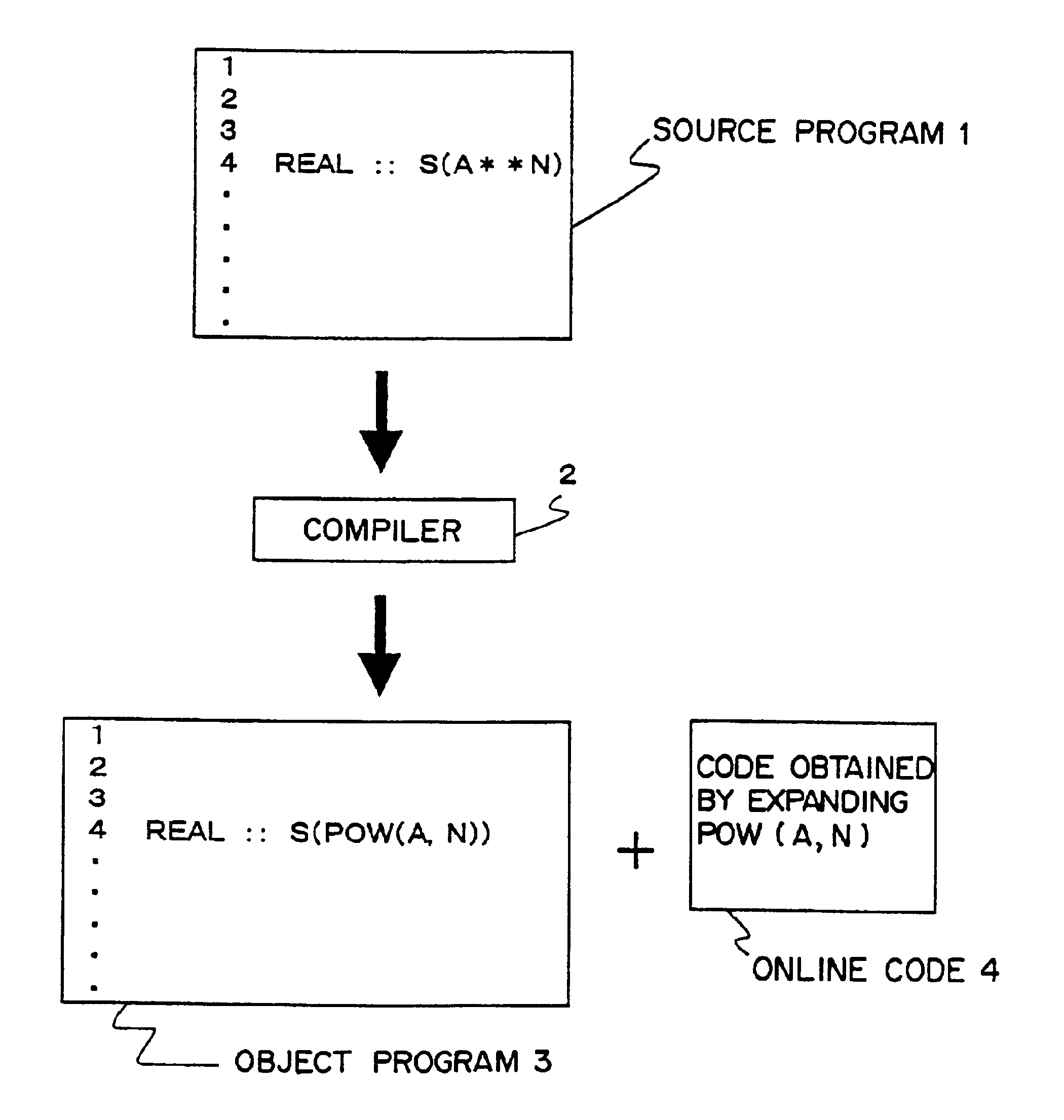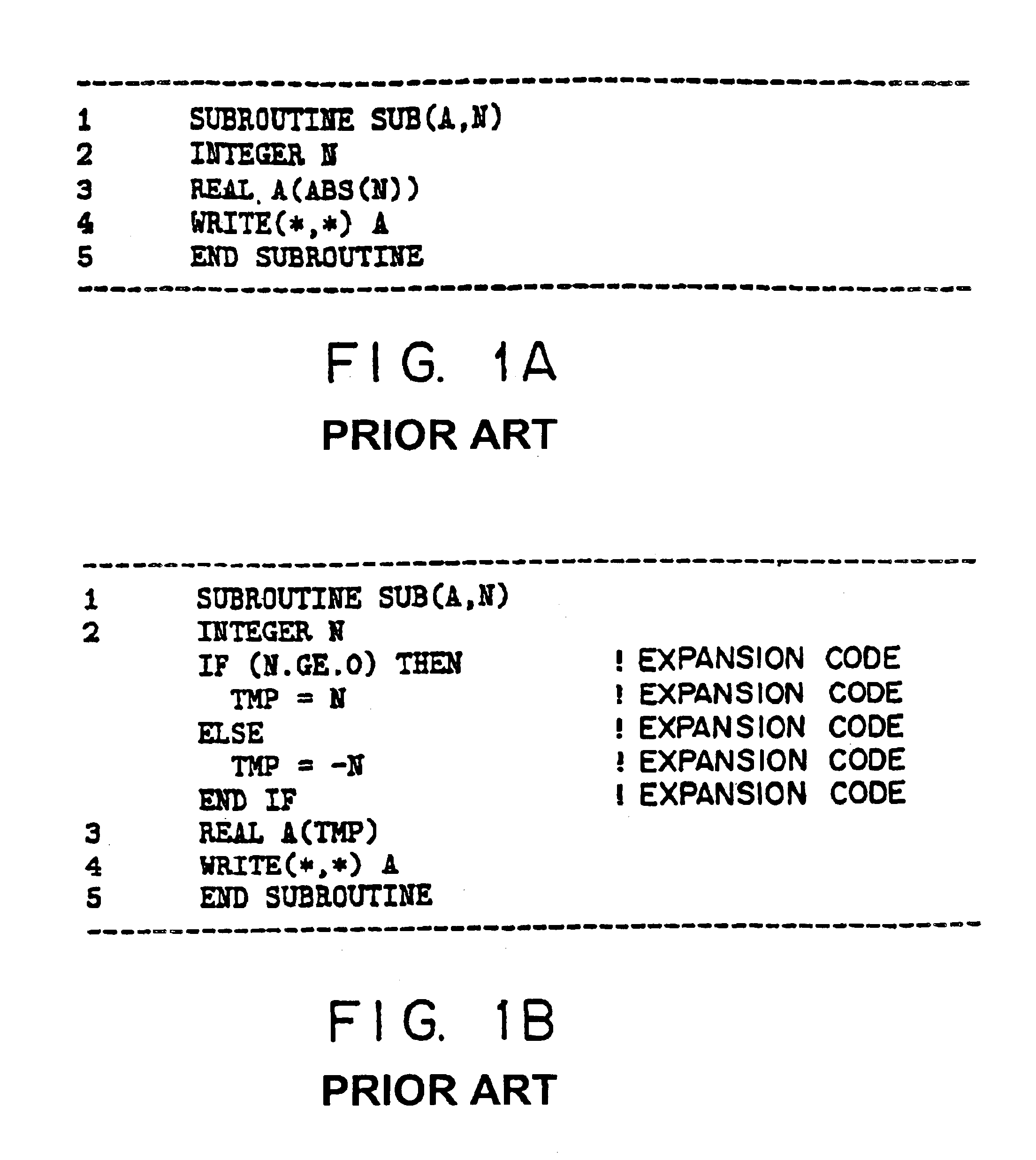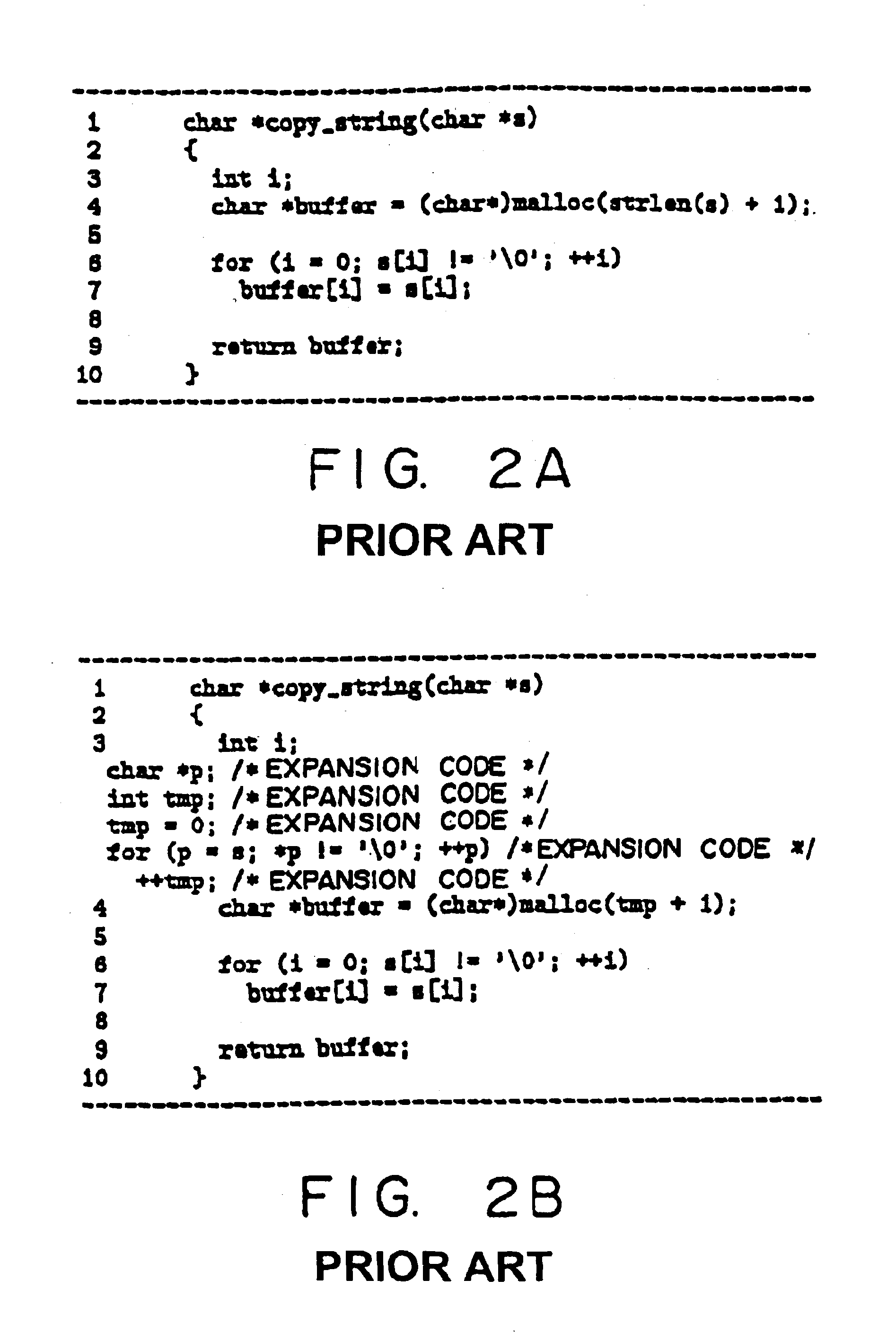As a result, when an built-in procedure of a high abstract level is converted using a common
library, the following problem arises.
(1) If the conversion is applied to all combinations, the
library becomes exceedingly large, thereby requiring a large storage medium (memory capacity) for storing the
library.
Therefore, the problem (1) above cannot be solved.
However, this method has the following problems.(a) To correspond to the differences in dimensionality, the number of nests of a loop should be variable, which unfortunately cannot be described in Fortran or the C language.
Thus, when an built-in procedure of a high abstract level is converted by a
preprocessor, a storage medium for storing a library becomes exceedingly large.
However, in a
preprocessor compiler, it is impossible or difficult to perform the inline expansion depending on the position where the procedure call appears.
(1) Normally, an execution statement cannot be expanded in a
declaration part. Therefore, when a function call, etc. appears in the
declaration part, it cannot be processed for inline expansion. If a function call, etc. appearing in the
declaration part is processed for inline expansion as is, then an error occurs when the obtained program is translated using the compiler in a base language. For example, when the declaration part of the input program shown in FIG. 1A is compiled into a Fortran program, the code shown in FIG. 1B is obtained. When the declaration part of the input program shown in FIG. 2A is compiled into a C program, the code shown in FIG. 2B is obtained. In these examples, since an execution statement (the function ABS in the example shown in FIG. 1, and the function strlen(s) in the example shown in FIG. 2) is expanded in the declaration part, an error occurs if a program obtained as a compilation result is translated in a Fortran compiler or a C compiler.
(2) Also in the execution part, the inline expansion may not be executed depending on the
syntax restrictions. For example, there is a restriction in Fortran 90 that an execution statement other than an assignment statement cannot be described in a “where statement”. Therefore, the function appearing in a “where statement” may not be processed for inline expansion.
(3) It can be difficult to avoid a conflict for a name. For example, if an built-in function SUM is used in a procedure to be expanded, it is difficult to avoid the problem that the same names coexist when the variable name SUM is used on the called side, and the variable appears as a real argument.
(4) When an execution statement, etc. is expanded, it is not simply expanded the statement, but one or more codes around the statement may have to be converted depending on the context. For example, as shown in FIG. 3A, if a function call (the function ABS in the example shown in FIG. 3) appears in the condition clause of the ELSE IF statement in the input program, then it is necessary to convert the
nest structure of the IF statement. Therefore, as shown in FIG. 3B, the inline expansion becomes complicated. In addition, when a call function appears in the condition clause of the DO WHILE statement in the input program, the function should be expanded both immediately before and in the loop. In this case, the inline expansion also becomes complicated. On the other hand, in the C language, for example, when the second or third expression in the parentheses of the “for statement” is to be expanded, the inline expansion also becomes complicated.
However, if an
object language has restrictions on the position where a process procedure can be described, the inline expansion may be difficult, or cannot be executed.
However, in a preprocessor compiler in which the
object language such as Fortran or the C language has a number of restrictions on the position where an execution code appears, the above described problems frequently occur in the inline expansion.
 Login to View More
Login to View More  Login to View More
Login to View More 


